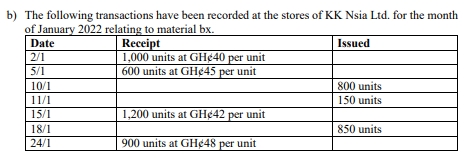- 20 Marks
FR – Dec 2022 – L2 – Q3 – IAS 7 Statement of Cash Flows
Prepare Dompa Ltd.'s statement of cash flows for the year ended 31 December 2021, using the indirect method based on the IAS 7 framework.
Question
Dompa Ltd prepares its financial statements in accordance with IFRSs. Below are the statement of profit or loss for the year ended 31 December 2021 and the statement of financial position as at that date, and the comparative statement of financial position as at 31 December 2020.
Statement of Profit or Loss for the year ended 31 December 2021
| Description | GH¢’000 |
|---|---|
| Revenue | 1,656,000 |
| Cost of sales | (745,200) |
| Gross profit | 910,800 |
| Other income | 15,000 |
| Admin expenses | (409,860) |
| Distribution costs | (136,620) |
| Profit before interest & tax | 379,320 |
| Finance cost | (3,232) |
| Profit before tax | 376,088 |
| Tax expense | (9,462) |
| Profit for the year | 366,626 |
Statement of Financial Position as at 31 December
| Description | 2021 (GH¢’000) | 2020 (GH¢’000) |
|---|---|---|
| Non-current assets: | ||
| Property, Plant & Equipment | 33,210 | 23,260 |
| Investment Property | 28,500 | 28,000 |
| Intangible Assets | 124 | 155 |
| Total Non-Current Assets | 61,834 | 51,415 |
| Current assets: | ||
| Inventory | 15,700 | 5,680 |
| Trade Receivables | 82,800 | 10,765 |
| Cash | 16,712 | 152 |
| Bank | 304,437 | 5,950 |
| Total Current Assets | 419,649 | 22,547 |
| Total Assets | 481,483 | 73,962 |
| Equity & Liabilities: | ||
| Equity: | ||
| Share capital | 30,000 | 25,000 |
| Retained earnings | 373,526 | 11,300 |
| Revaluation surplus | 862 | 1,262 |
| Total Equity | 404,388 | 37,562 |
| Non-current liabilities: | ||
| 15% bond redeemable in 2024 | 20,432 | 20,200 |
| Deferred tax | 3,762 | 2,300 |
| Current liabilities: | ||
| Trade & other payables | 46,401 | 7,600 |
| Current tax | 6,500 | 6,300 |
| Total Equity & Liabilities | 481,483 | 73,962 |
Additional Information:
i) Depreciation expense on tangible non-current assets recognised for the year is GH¢8,804,000.
ii) An impairment review has been undertaken on one of the machines of the company that has a carrying value of GH¢1,500,000, but an estimated recoverable amount at the impairment review date was GH¢745,000.
iii) One of the company’s vehicles was involved in an accident in the year and was written off with a carrying value of GH¢562,000.
iv) The company sold a machine for GH¢850,000 with a carrying value of GH¢689,000.
v) The company also issued a 15% bond in January 2020 at a par value of GH¢20,000 with a tenure of 5 years.
vi) The company realized GH¢400,000 in revaluation surplus through excess depreciation charges.
Required:
Using IAS 7: Statement of Cash Flows, prepare the statement of cash flow for Dompa Ltd for the year ended 31 December 2021.
Find Related Questions by Tags, levels, etc.
- Tags: Cash Flow, Financing Activities, Investing Activities, Operating Activities
- Level: Level 2
- Topic: IAS 7: Statement of cash flows
- Series: DEC 2022


